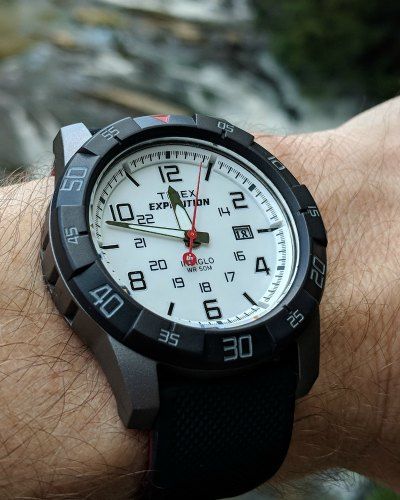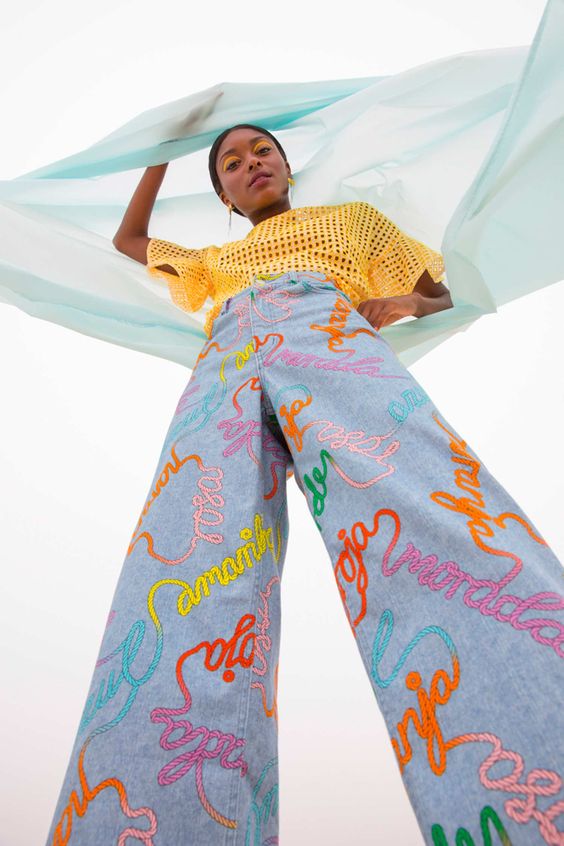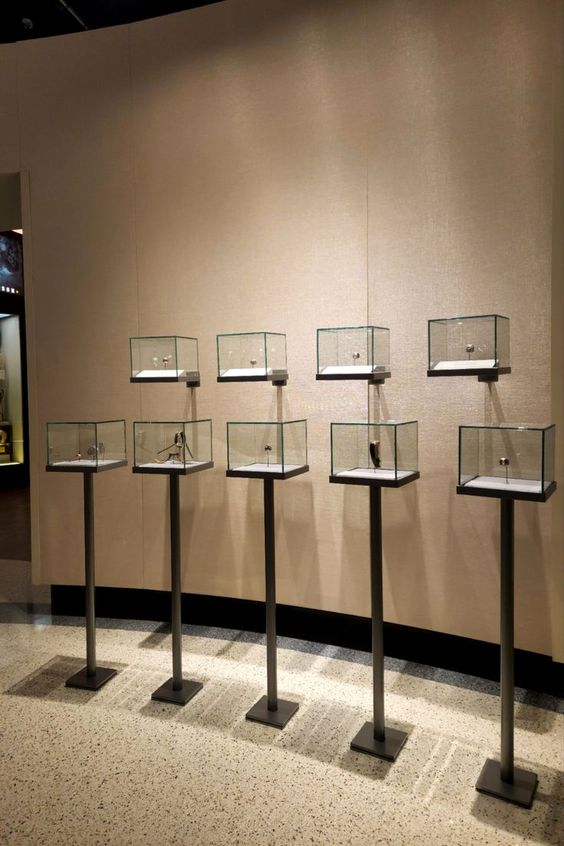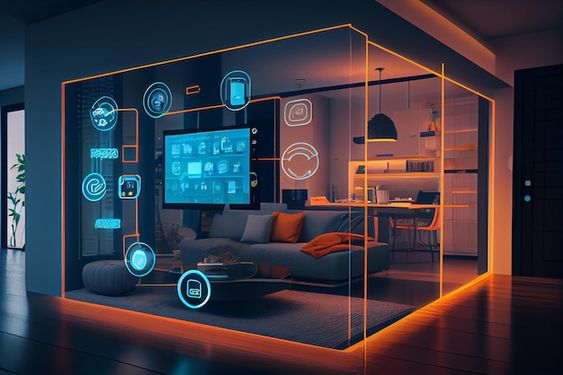The Role of Technology in Fashion

In the dynamic realm of fashion, technology emerges as a transformative force, reshaping the industry’s landscape. This intersection between fashion and technology is not merely a trend but a pivotal evolution that defines the modern era. Wearables, smart fabrics, and other technological innovations have become integral components, contributing to a fashion narrative that extends beyond aesthetics.
The fusion of fashion and technology is characterized by a synergy that goes beyond visual appeal. Wearable technology, ranging from smartwatches to augmented reality glasses, not only enhances personal style but also introduces functional elements into our daily lives. The marriage of fashion and wearables is a testament to the industry’s adaptability and commitment to delivering both form and function.
Smart fabrics, another trailblazing aspect of this collaboration, have revolutionized textile engineering. From temperature-regulating materials to fabrics embedded with electronic components, these innovations redefine the very essence of what we wear. The incorporation of such fabrics into garments showcases a commitment to comfort, performance, and a futuristic aesthetic.
As we delve into this realm of fashion tech, it’s not just about following trends but understanding a paradigm shift. The fashion industry’s adoption of technology extends beyond consumer products; it’s about sustainability, efficiency, and pushing creative boundaries. This symbiotic relationship opens up new horizons, promising an exciting future where fashion is not only an art form but a dynamic expression of innovation and utility. In this narrative, technology is not just a tool but a collaborator, shaping the way we perceive, create, and experience fashion.
Evolution of Technology in Fashion
The evolution of technology in the fashion industry marks a transformative journey, reshaping traditional paradigms and elevating the consumer experience. From the early stages of adopting computer-aided design (CAD) for precision in garment creation to the current era of cutting-edge innovations, technology has become a driving force in the fashion landscape.
One of the noteworthy advancements is the integration of 3D printing, revolutionizing prototyping and manufacturing processes. This technology allows designers to bring intricate and avant-garde designs to life with unprecedented speed and precision. The democratization of design through accessible 3D printing has paved the way for a more inclusive and diverse fashion ecosystem.
In the retail sphere, the application of augmented reality (AR) and virtual reality (VR) technologies has enhanced the consumer’s shopping experience. Virtual try-ons, AR mirrors, and immersive shopping platforms are redefining how individuals engage with fashion, offering a blend of convenience and personalization.
Sustainability has also found an ally in technology, with the rise of blockchain in supply chain management, ensuring transparency and traceability of materials. This tech-driven approach addresses concerns about the environmental impact of fast fashion and fosters a more ethical and eco-friendly industry.
As technology continues to evolve, the fashion industry stands at the intersection of creativity and innovation. The incorporation of artificial intelligence, data analytics, and smart textiles further propels the industry forward, shaping a future where fashion is not only an expression of style but a dynamic fusion of craftsmanship and cutting-edge technology.
Wearable Technology: From Concept to Reality

Wearable technology has emerged as a dynamic fusion of fashion and functionality, transitioning from conceptual marvels to tangible, everyday accessories. In the realm where fashion meets technology, wearables have become a pivotal force, seamlessly integrating into our lives and redefining how we interact with both clothing and gadgets.
The evolution of smartwatches exemplifies the journey from concept to reality in wearable technology. What began as a vision of wrist-worn devices capable of more than just timekeeping has materialized into sophisticated gadgets offering health tracking, communication features, and even style customization. Smartwatches, with their sleek designs and multifunctionality, embody the marriage of fashion sensibility and technological prowess.
Beyond wristwear, the fashion industry has seen the rise of smart fabrics and textiles. From responsive materials that adapt to environmental conditions to garments embedded with sensors for health monitoring, the potential of wearable technology in clothing is vast. Designers are experimenting with innovations like LED-embedded fabrics, creating dynamic, color-changing garments that redefine the boundaries of fashion expression.
The democratization of wearable technology has made these innovations accessible to a broader audience, influencing how consumers perceive and engage with fashion. As wearables seamlessly integrate into our daily lives, from fitness trackers to smart eyewear, the synergy between fashion and technology continues to shape a future where our garments are not just adornments but interactive and intelligent extensions of ourselves.
Smart Fabrics and Textiles

Smart fabrics and textiles represent a revolutionary shift in the landscape of fashion, where garments go beyond mere aesthetics to embody intelligent and functional features. The integration of technology into fabrics has opened up a realm of possibilities, giving rise to innovative designs that blur the lines between fashion and advanced engineering.
These fabrics are not just passive materials; they are active participants in enhancing the wearer’s experience. Responsive to environmental conditions, smart fabrics can adapt to changes in temperature, moisture, or light, ensuring optimal comfort and functionality. For instance, adaptive textiles with built-in sensors can regulate body temperature by reacting to fluctuations in the surroundings, providing a dynamic and personalized experience for the wearer.
The use of smart textiles extends beyond comfort to address health and well-being. Fabrics embedded with biometric sensors can monitor vital signs, allowing individuals to track their health seamlessly. This convergence of fashion and health technology represents a paradigm shift, where clothing becomes an integral part of holistic well-being.
In the fashion industry, designers are exploring the artistic potential of smart fabrics, creating garments that respond to movement or external stimuli. The interplay of light, color, and texture in these textiles enables the creation of dynamic and visually captivating designs, showcasing the artistic expression achievable through the fusion of fashion and technology.
As smart fabrics continue to evolve, their integration into mainstream fashion reflects a future where garments are not just worn but actively contribute to the wearer’s experience, health, and self-expression. The marriage of fashion and technology in smart fabrics is an exciting frontier that propels the industry into a new era of innovation and creativity.
Augmented and Virtual Reality in Fashion

The advent of augmented and virtual reality (AR/VR) in the fashion industry has ushered in a transformative era, revolutionizing the way consumers interact with and experience fashion. These cutting-edge technologies seamlessly integrate the digital and physical worlds, offering immersive and engaging encounters that go beyond traditional shopping experiences.
Augmented reality, in particular, enhances the physical environment with digital overlays, allowing customers to virtually try on clothing or accessories from the comfort of their homes. Through AR applications, shoppers can see how garments fit, experiment with different styles, and make informed decisions before making a purchase. This not only enhances the online shopping experience but also mitigates the challenges associated with buying clothing without trying it on.
On the other hand, virtual reality transports users to entirely digital realms, offering fashion enthusiasts the opportunity to attend virtual fashion shows or explore virtual boutiques. Designers can leverage VR to create virtual prototypes and simulate fashion presentations, streamlining the design process and fostering creativity.
The immersive nature of AR/VR in fashion extends beyond retail, influencing marketing strategies and brand engagement. Virtual fashion events, interactive campaigns, and AR-powered advertisements captivate audiences and provide memorable brand experiences. These technologies bridge the gap between the physical and digital realms, transforming fashion from a product to an interactive and experiential journey.
As AR/VR technologies continue to evolve, their integration into the fashion landscape represents a paradigm shift, promising a future where consumers engage with fashion in ways previously deemed unimaginable. The fusion of technology and fashion through AR/VR not only enhances accessibility but also redefines the very essence of the fashion experience.
Sustainability through Tech Innovations
In the realm of fashion, a dynamic shift towards sustainability has been fueled by innovative technological solutions. Tech-driven sustainability initiatives are reshaping the industry, addressing environmental concerns, and fostering a more responsible approach to production and consumption.
One significant stride is the integration of blockchain technology, providing transparency and traceability in the fashion supply chain. Blockchain enables consumers to trace the journey of a garment from its origin, ensuring ethical sourcing, fair labor practices, and environmentally friendly production processes. This newfound transparency cultivates a sense of trust among consumers, empowering them to make informed choices aligned with their values.
Moreover, advancements in materials science and fabric technology contribute to sustainable fashion practices. The development of eco-friendly materials, such as recycled fibers and biodegradable fabrics, minimizes the environmental impact of clothing production. Additionally, innovative dyeing and finishing processes powered by technology reduce water consumption and chemical usage, aligning with the principles of eco-conscious design.
The emergence of 3D printing technology further revolutionizes sustainable fashion by enabling on-demand production. This eliminates excess inventory, reduces waste, and allows for customized, made-to-order garments. 3D printing also facilitates the creation of intricate designs with minimal material waste, contributing to a more sustainable and efficient manufacturing process.
In conclusion, the intersection of fashion and technology holds the promise of a sustainable future. These tech-driven innovations empower both consumers and industry players to make environmentally conscious choices, fostering a harmonious relationship between fashion, technology, and the planet.
The Influence of Artificial Intelligence
The fashion landscape is undergoing a transformative revolution with the pervasive influence of Artificial Intelligence (AI). AI’s impact on the industry is multifaceted, ranging from personalized shopping experiences to predictive trend analyses, making it a pivotal force in shaping the future of fashion.
In the realm of personalized experiences, AI algorithms analyze vast datasets of consumer preferences and behaviors, allowing fashion brands to curate tailored recommendations. This not only enhances customer satisfaction but also contributes to a more sustainable model by aligning production with actual demand, reducing unnecessary waste and overstock.
AI’s predictive capabilities extend to trend forecasting, revolutionizing how designers and retailers anticipate and respond to market demands. By analyzing social media trends, search patterns, and historical data, AI algorithms generate insights that inform decisions in design, production, and marketing. This enables the industry to stay agile, adapting to rapidly evolving consumer preferences.
Virtual assistants powered by AI are also enhancing the customer service experience. Chatbots and virtual stylists engage with customers, providing real-time assistance, answering queries, and offering personalized fashion advice. This not only improves customer satisfaction but also streamlines the buying process, contributing to the efficiency of fashion e-commerce.
In conclusion, the integration of Artificial Intelligence into the fashion ecosystem signifies a paradigm shift. From personalized shopping experiences to data-driven trend predictions, AI is not just a technological tool; it’s a catalyst for innovation, efficiency, and a more customer-centric fashion industry.
Future Trends: Navigating the Tech-Fashion Landscape

As we venture further into the 21st century, the intersection of fashion and technology continues to redefine the industry, offering a glimpse into the future trends that will shape our wardrobe and experiences. The symbiotic relationship between fashion and technology is evolving, paving the way for innovative trends that transcend the conventional boundaries of style.
One prominent trend on the horizon is the integration of immersive technologies like Virtual Reality (VR) and Augmented Reality (AR) into the fabric of fashion. Virtual shopping experiences, where consumers can virtually try on clothing or accessories, are becoming increasingly sophisticated. This not only revolutionizes the way we shop online but also enhances the overall customer experience by providing a more interactive and engaging platform.
Sustainability is another key focal point for future fashion-tech trends. As environmental consciousness grows, technology is being harnessed to create eco-friendly materials, streamline production processes, and promote a circular fashion economy. From AI-driven supply chain optimizations to the use of recycled and biofabricated materials, the future of fashion is leaning towards ethical and sustainable practices.
The marriage of technology and fashion is also evident in the rise of smart textiles and wearables. The integration of functional technology into clothing, such as smart sensors or conductive fabrics, is transforming our garments into interactive and data-generating accessories. This not only adds a layer of convenience but also opens avenues for personalized health monitoring and performance enhancement.
In conclusion, the future of fashion promises an exciting journey into a realm where technology seamlessly intertwines with our sartorial choices. As AR, VR, sustainability, and smart textiles take center stage, the fashion landscape is set to undergo a radical and tech-driven transformation, shaping an era where innovation and style coalesce.







